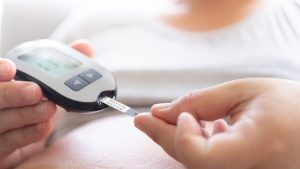Articles / Are the new sport concussion guidelines workable?

New concussion guidelines say athletes under 19 should have at least 14 “symptom-free” days before returning to contact training, and should wait a minimum of 21 days from the time of the concussion before returning to competitive contact sport.
The same goes for athletes in the community who don’t have a dedicated healthcare professional guiding their recovery, according to the Australian Concussion Guidelines For Youth and Community Sport released by the Australian Institute of Sport (AIS) and the Australian Sports Commission earlier this month.
Professor Gary Browne, medical director of the Kids Concussion Service, and staff specialist at the Children’s Hospital Institute of Sports Medicine at The Children’s Hospital at Westmead, believes the timeframes are too prescriptive—leaving less room for clinical judgement.
He notes that the included examples of return to sport timeframes imply the athlete is going to spend several days at each step before they move on, which may not be realistic. “I don’t know how compliant young people are going to be with this,” he says. He says the prescriptive nature could create medico-legal concerns for GPs. For example, if they clear someone who comes in after a few days saying they’re perfectly well, but some sort of critical incident such as a more extended brain injury occurs, he worries that lawyers could use this document against them.
“We’ve got to remember these are guidelines. These are not absolute. However, once there’s a guideline — and this AIS guideline is supported by the Australian government and by the Australian Sports Commission — they’re in concrete… so GPs do need to be a little bit cautious.” – Professor Gary Browne
“There are a lot of concussion experts that really feel very concerned about them being so prescriptive. It is supported by the Australian government, and it could be difficult for GPs if there is a difficult parent…”
Exercise physiologist and research co-ordinator Andrew Fyffe, who also works at Kids Concussion Service Children’s Hospital Institute of Sports Medicine at The Children’s Hospital at Westmead, worries that the take-away for many will be ‘21 days’, with less focus on the crucial period of reconditioning.
“I think what will happen is people will say, ‘you’ve waited your 21 days now, you’re right to get back out there,’ but won’t be any of that planning in the middle part,” Fyffe says. “So that’s really, really important. You don’t just say ‘21 days of rest, and then you’re ready to go back.’ You have to go through the steps of gradually returning back to sport.”
Fyffe and Browne say reconditioning will differ depending on the sport, but basically involves training with no contact, tackling or heading the ball whatsoever — drills included.
“It’s getting out there and being physically active, but avoiding any premeditated contact, as much as you can within reason. So no games — no organised games or little mini games at the end of training — none of that,” Professor Browne says.
Kicking, running around and practising ball skills, as well as activities like swimming to maintain general fitness, get the green light.
The new guidelines for community and youth sport call for:
An initial 24-48 hour period of relative physical and cognitive rest, with time off school or work.
After the initial period of rest, daily activities and low or moderate intensity exercise should be reintroduced.
Any exercise-related symptoms should be completely resolved before resuming contact training.
Sources: Medical Practitioners | Concussion in Australian Sport (concussioninsport.gov.au) and Australian Concussion Guidelines For Youth and Community Sport
Professor Browne says the key consideration is how well the athlete tolerates the symptoms.
For example, if they are starting to get back into moderate intensity activity and get a bit of a headache, but it’s not really worrying them, goes away quickly and only happens here or there, he’d be happy for them to push forward.
“We don’t want them pushing through bad symptoms – but once they’re at that level where the symptoms are tolerated, if they’re not moving forward beyond that, then they’re just not going to progress,” he explains. “But certainly if they were out there running around the oval and the next day their headache is so bad they can’t do anything, then they clearly haven’t recovered and they’ve actually pushed themselves beyond their level of tolerance.”
“It’s not about not having symptoms. It’s all about as your brain recovers, you become more tolerant to those symptoms, which eventually then fade away and become a non-issue,” Professor Browne says.
Fyffe says the lack of clarity in the guidelines around what it means to be symptom free is another concern.
“I’m not so much concerned with there being a minimum time out because I think that does prevent kids from going back to soon, but I think it’s clouded by this 14 days symptom free,” he says.
“There’s no asking about if they’ve had symptoms before the injuries. So some people have issues before the injury that are still going to be there after the injury. And how does that influence being symptom-free? I think the push should have been more for better objective testing, giving GPs and other people better ways of actually clearing their patients… Better objective testing, rather than just having a timeframe.”
In addition to being symptom free at rest and not having significant symptom exacerbation during exercise, Fyffe recommends bedside cognitive testing and usually a bit of balance and vestibular testing.
The Australian Institute of Sport did not respond to request for further clarification on this point, instead referring doctors to the resources for medical professionals and the guidelines linked below.
Professor Browne says GPs would commonly see a patient 3-5 days post injury — by then a lot of kids are actually much better, and if that’s the case he recommends booking a two-week follow up and counselling them to go run around, ride a bike and otherwise be active without participating in any sort of contact sport in the interim. He says a symptom monitoring score sheet can also be helpful for parents, and reduce the medico-legal risk for GPs.
“I think quite sensibly, they just need to say to all young people, your brain needs time. And three weeks is around about the right time for you to recover from an injury.”
“I put it this way to families: if you go out there and you get a significant injury with a swollen knee, even if your knee is no longer painful, if it’s still swollen and not quite right, you’re not going to go back to play football or significant contact sport on that knee until the whole thing has resolved and it is nice and strong and ready to return. The brain is the same. It’s just you can’t see the injury — it’s a silent injury, that’s the problem.”
For more information:
Medical Practitioners | Concussion in Australian Sport (concussioninsport.gov.au)
Australian Concussion Guidelines For Youth and Community Sport
The updated Concussion and Brain Health Position Statement 2024
*The position statement includes a clear disclaimer that it should not be interpreted as a guideline for clinical practice or legal standard of care.

Managing Paediatric Anxiety in General Practice

OSA – Which Test for Which Patient

Musculoskeletal Health in Menopause

AHPRA-Proof Your Practice – Social Media Risks for GPs



Strongly agree
Somewhat agree
Neutral
Somewhat disagree
strongly disagree
Listen to expert interviews.
Click to open in a new tab
Browse the latest articles from Healthed.
Once you confirm you’ve read this article you can complete a Patient Case Review to earn 0.5 hours CPD in the Reviewing Performance (RP) category.
Select ‘Confirm & learn‘ when you have read this article in its entirety and you will be taken to begin your Patient Case Review.
Menopause and MHT
Multiple sclerosis vs antibody disease
Using SGLT2 to reduce cardiovascular death in T2D
Peripheral arterial disease
